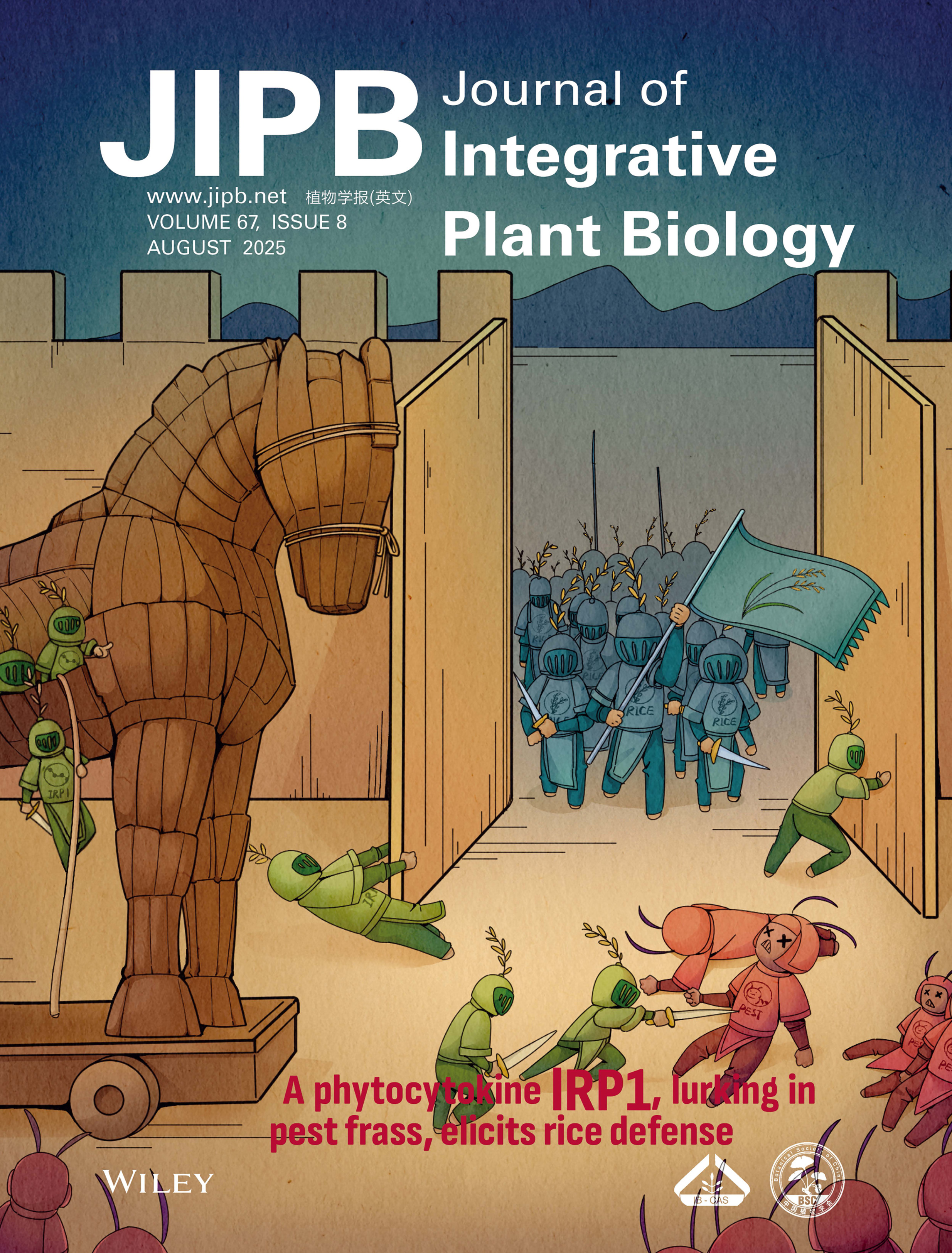Table of Content
-

, Volume 67 Issue 8
Cover Caption: The Trojan Horse was a giant wooden statue constructed by the Greeks during the Trojan War to conceal elite soldiers inside. By pretending to retreat and offering the statue to the city of Troy, the Greeks ultimately achieved a decisive victory. Chen et al. (pages 2118–2134) demonstrated that the rice phytocytokine IMMUNE RESPONSEPEPTIDE 1 (IRP1) and its derived peptides resemble hidden soldiers, hiding in ambush inside pest frass (the“Trojan Horse”) during pest feeding, and finally activating rice plant defenses. This work provides a unique example of how a plant senses the presence of herbivores by perceiving its own phytocytokines in herbivore frass and then launching its defenses. [Detail] ...For Selected: 

Toggle Thumbnails
For Upcoming Special lssue:

 Scan the QR code to view JIPB on WeChat
Scan the QR code to view JIPB on WeChat
Follow us at @JIPBio on Twitter













